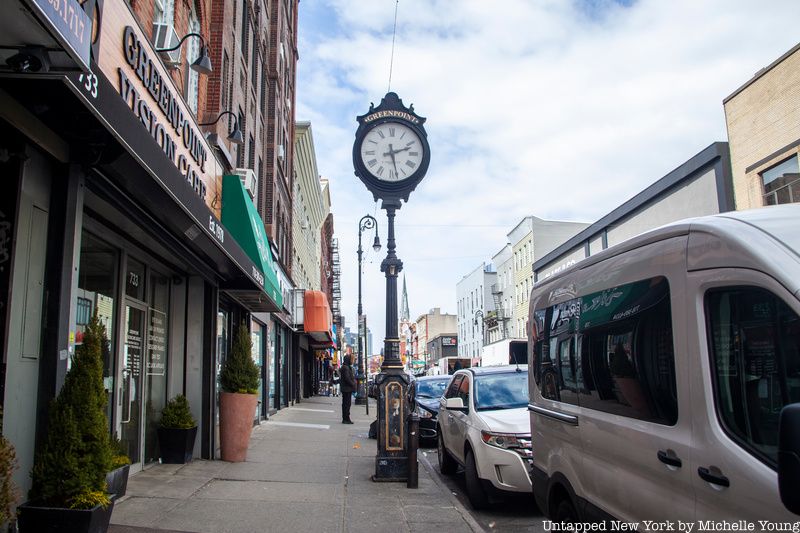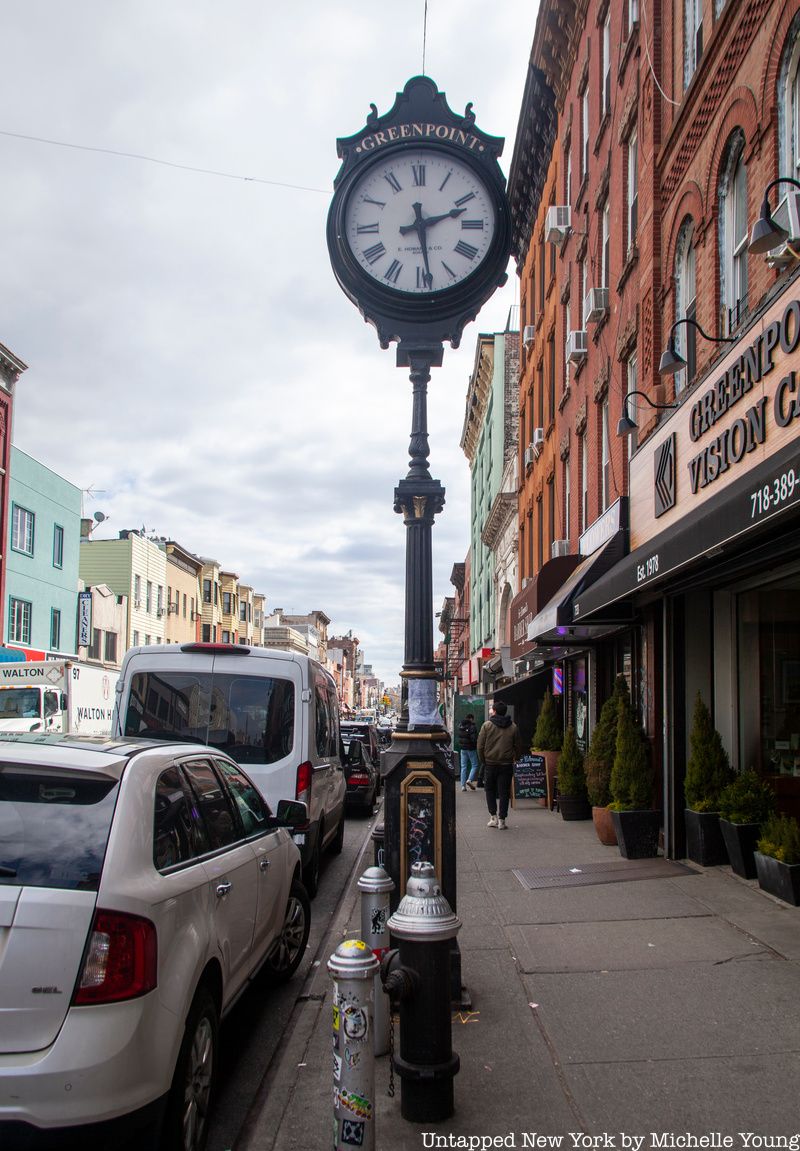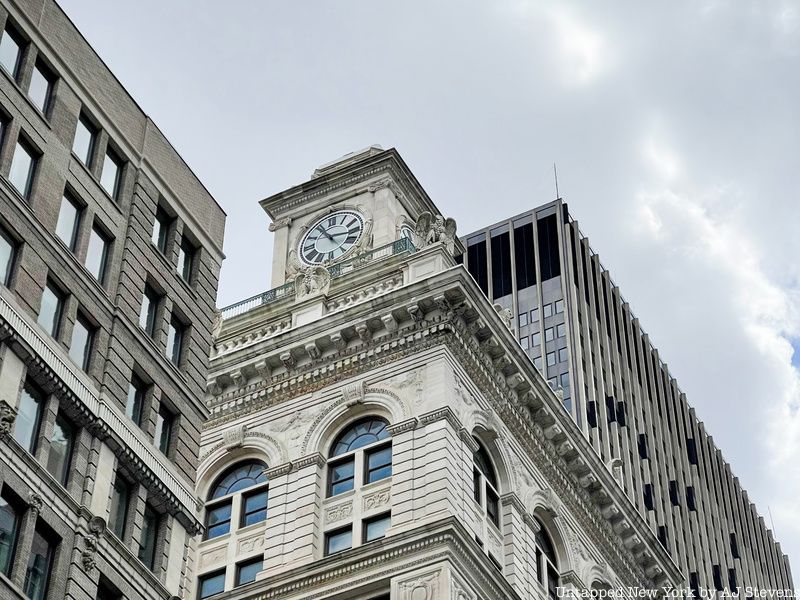Last-Minute NYC Holiday Gift Guide 🎁
We’ve created a holiday gift guide with presents for the intrepid New Yorker that should arrive just in time—


Some of New York City’s more unusual landmarks are its historic sidewalk clocks. Of the seven sidewalk clocks designated by the Landmarks Preservation Commission, only one — the Bomelstein Jewelers sidewalk clock — is in Brooklyn. (Four are in Manhattan and two are in Queens). Sidewalk clocks were once a dominant form of street furniture in the late 19th century (and often used as advertising), but many have been lost to automobile accidents and sidewalk ordinances. According to the Landmarks Preservation Commission, cast-iron street clocks were first installed in New York in the 1860s. Small businesses “that stayed in the same location year after year would buy a street clock and install it directly in front of the store, often painting the name of the business onto the clock face. When the business owners moved, they usually took their clocks with them.”

The Bomelstein Jewelers sidewalk clock is located in front of 733 Manhattan Avenue along the main commercial stretch in Greenpoint, Brooklyn. Interestingly, the clock you see today is neither in its original location nor has its original clock face. In fact, the 1981 landmarks designation report shows what it looked like at the time, with a ‘70s-era typeface. Only the base and the post are original to the clock, which was made by the E. Howard Clock Co. in the early 20th century.

To understand this mystery, we turned to Jeremy Woodoff, who works in the Historic Preservation Office of the NYC Department of Design and Construction, and is a board member of Save America’s Clocks, an organization dedicated to identifying, preserving, and keeping operational public clocks throughout the U.S. Woodoff says, “As happened with so many of these sidewalk clocks, when electric movements became available starting in the 1930s, many of the mechanical movements were replaced. Often at the same time the advertising potential of the clock was realized with new signs, often electric, added to the original top of the clock. Sometimes the entire top of the clock including the dial was replaced, and that’s what happened to the Bomelstein clock.”

In the 1980s, the clock was moved down the block from number 753 Manhattan Avenue, where Bomelstein’s was located, to 733 Manhattan Avenue when the jewelry store closed this location. When the NYC Department of Transportation reconstructed Manhattan Avenue, the clock was restored and relocated, under the watchful purview of the Landmarks Preservation Commission. Greenpoint Vision Care, which is still in business today, supplied the electrical power for the clock and the clock top was replaced with a reproduction of a turn-of-the-century E. Howard sidewalk clock.
The E. Howard Company was well-known for its sidewalk clocks and even held a patent for them, but they also designed the first mass-produced pocket watch and produced a variety of clock-oriented consumer products. It also designed the clock atop the original New York Life Insurance Company Building at 346 Broadway in Manhattan. That particular clock, considered the largest clock mechanism in the United States, was the subject of a multi-year lawsuit in the New York State courts from 2016 to 2019, with appeals and reversals as organizations including Save America’s Clocks, the Historic Districts Council, and the Tribeca Trust fought to prevent the destruction of the clock. Although the landmarked clock was not destroyed, its mechanism has been dismantled in part, an electric motor was installed, and the clocktower was closed to the public.

The Bomelstein sidewalk clock was hit by trucks twice after its relocation, and in an effort to prevent additional damage, the clock was turned 90 degrees. However as Woodoff explains, “This worked, but wasn’t satisfactory as it defeated the whole point of being able to see the time as you walked on the sidewalk or drove down the street. So the dials were reoriented correctly and a short extension added to the post so that the head of the clock was out of reach of adjacent trucks.” Today, you will find the Bomelstein clock, a little bit taller than before, in the correct orientation at 733 Manhattan Avenue.
You can find the city’s other landmarked sidewalk clocks in front of Eataly (the former Toy Center), in front of the Sherry Netherland Hotel, at 1501 Third Avenue, and at 522 Fifth Avenue. There two in Queens are at 16-11 Jamaica Avenue, thought to have been installed by Busch’s Jewelers and a Wagners Jewelers Clock at 30-78 Steinway Street.
Next, check out 12 of NYC’s most unusual landmarks.
Subscribe to our newsletter